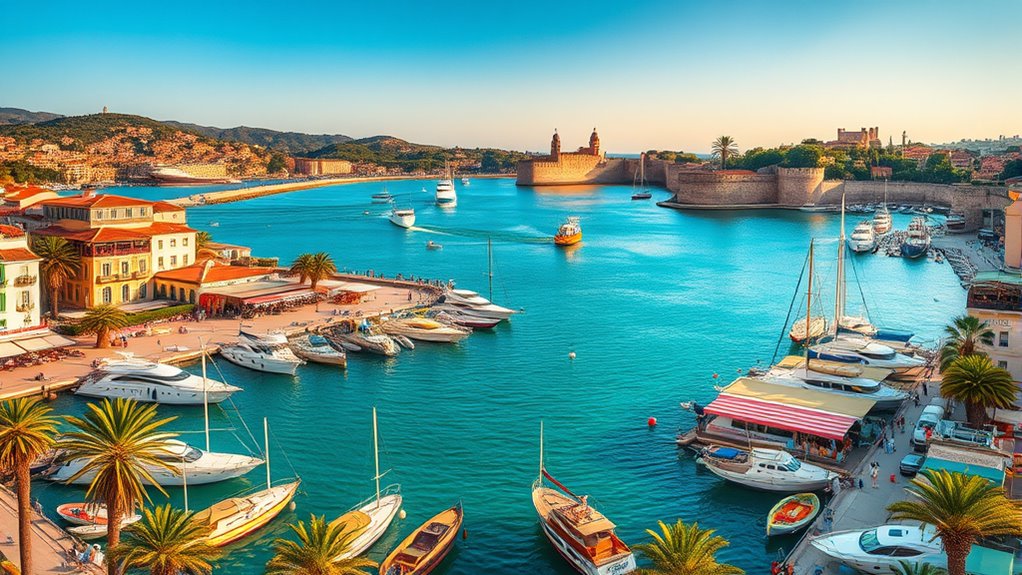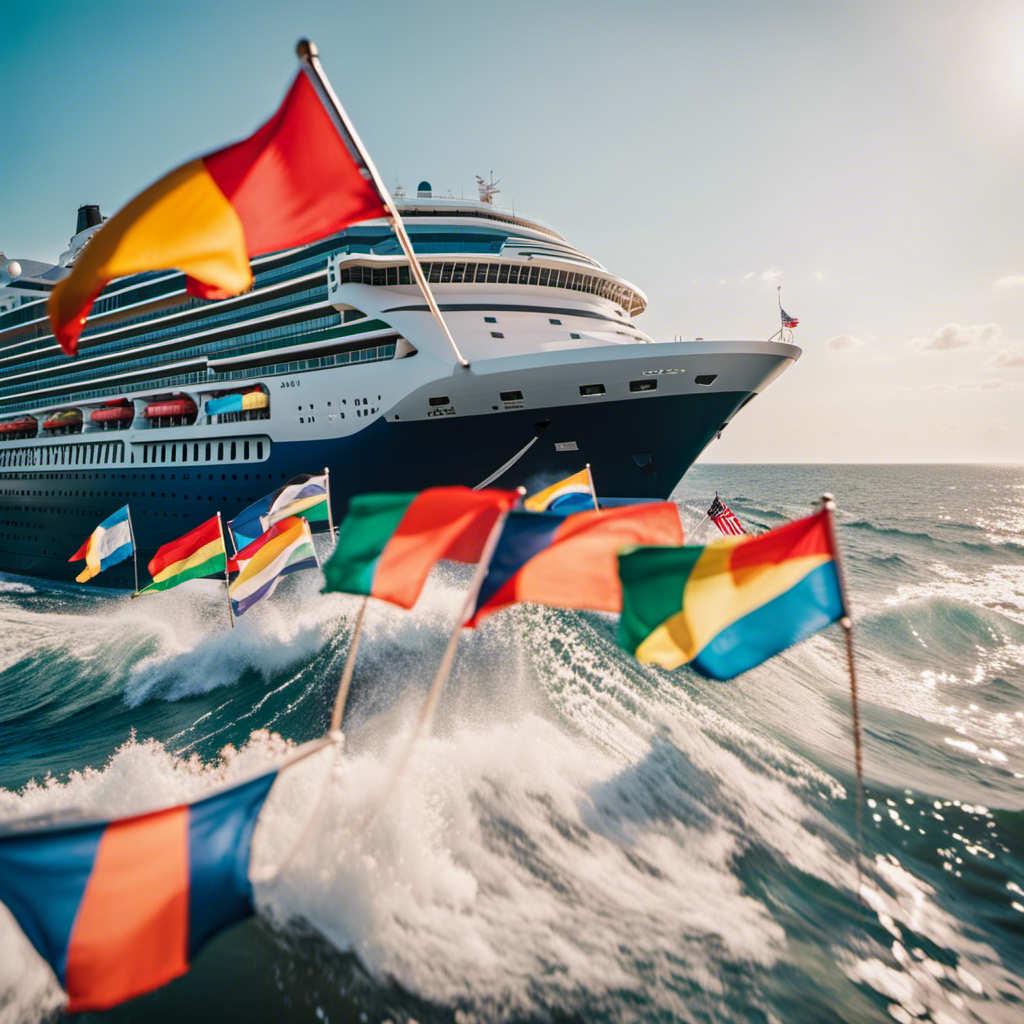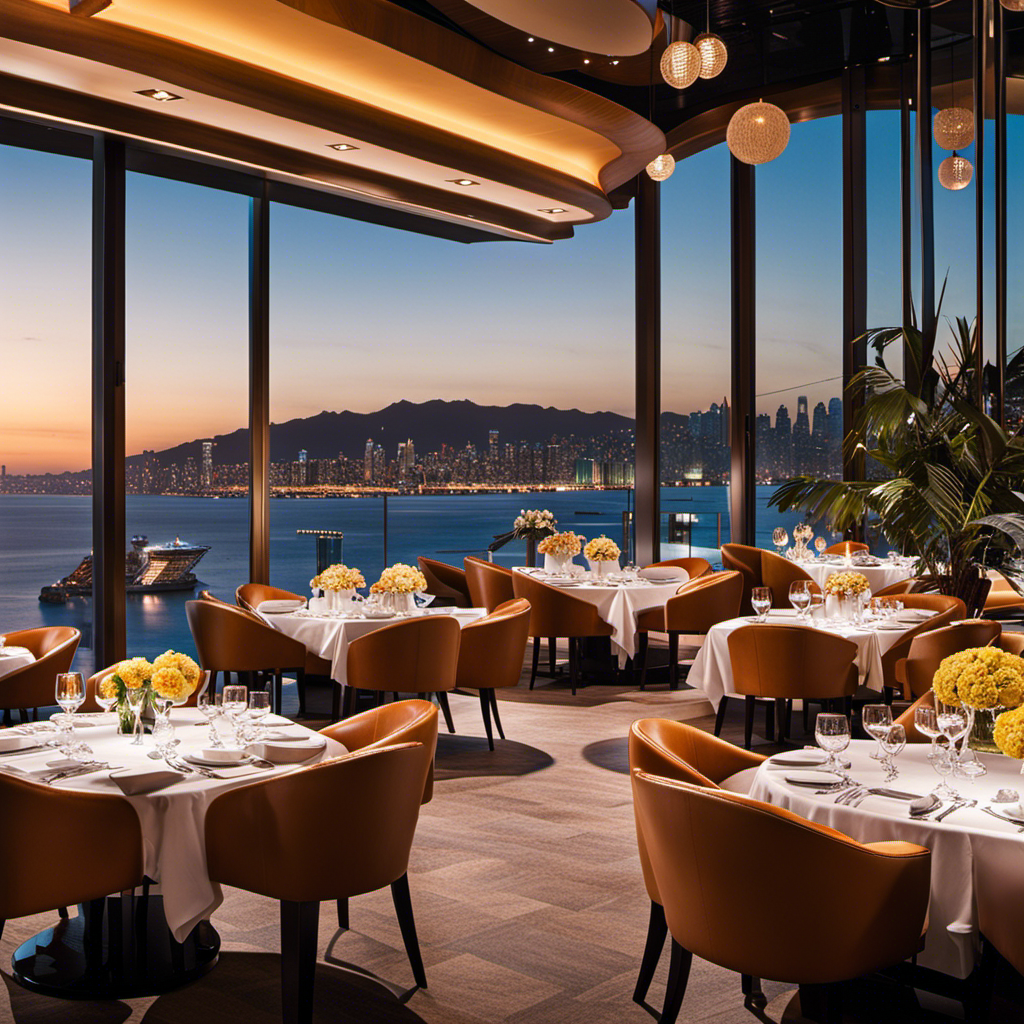If you’re exploring the Mediterranean, top ports include Barcelona’s art-filled streets, Valletta’s historic landmarks, Dubrovnik’s medieval walls and stunning coastline, Naples’ ancient ruins, Rome’s iconic sights, and Rhodes’ charming Old Town and beaches. Each offers unique cultural treasures, scenic views, and outdoor adventures that make your cruise unforgettable. Want tips on the best times to visit or how to plan your stops? Keep going to discover more!
Key Takeaways
- Discover historic cities like Valletta, Dubrovnik, and Rome, each offering UNESCO sites, ancient walls, and rich cultural heritage.
- Enjoy scenic coastal views through city walls, cable cars, and boat trips along the Mediterranean sea.
- Explore diverse culinary traditions, from Maltese dishes to Italian and Greek cuisines, with local markets and regional wines.
- Visit iconic landmarks such as Sagrada Familia, Pompeii, and the Palace of the Grand Master for deep historical insights.
- Experience vibrant local atmospheres, beaches, and outdoor activities that showcase the Mediterranean’s natural beauty.
Barcelona, Spain: A Gateway to Artistic and Architectural Marvels

Barcelona serves as an ideal starting point for exploring artistic and architectural marvels, thanks to its compact layout and excellent transportation options. As a cruise port, Barcelona offers quick access to key attractions like the Gothic Quarter, Santa Maria del Mar, and the Picasso Museum, all within walking distance. A short, inexpensive shuttle connects the cruise terminal to La Rambla, making it easy to reach cultural sites and shops. Public transportation, including the affordable T10 card, lets you explore the city and even reach the airport effortlessly. Don’t miss La Sagrada Familia, which is easily accessible from the port and public transit. With beaches nearby and lively streets to explore, Barcelona combines art, architecture, and leisure seamlessly for a memorable Mediterranean experience. The city’s efficient transit system also supports projector installations in public spaces, enhancing cultural displays and events. Exploring local markets and cafes provides an authentic taste of the region’s diverse flavors, enriching your cultural journey. Additionally, the city’s rich history and vibrant street life offer numerous opportunities for spontaneous artistic inspiration, making every visit uniquely memorable. To deepen your appreciation, consider taking guided tours that highlight the region’s architectural heritage, adding context and insight to your explorations.
Valletta, Malta: The Heart of Mediterranean History and Culture
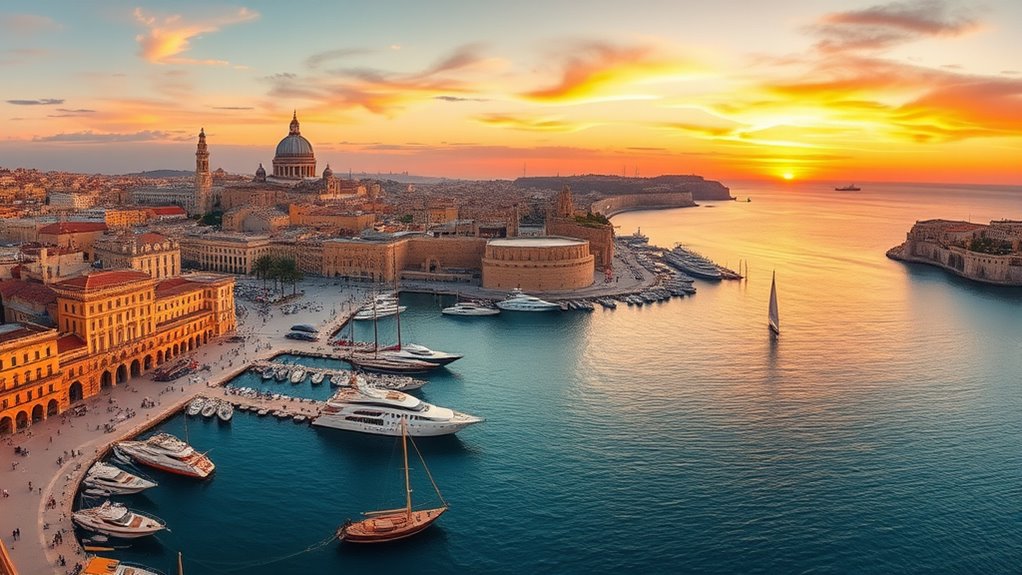
Valletta’s rich history comes alive through its well-preserved landmarks like St. John’s Co-Cathedral and the Grand Master’s Palace. You can easily explore the city on foot, taking in its vibrant streets and stunning harbor views from the Upper Barrakka Gardens. Plus, the local cuisine offers a delicious taste of Mediterranean and Maltese flavors at many welcoming restaurants. Being mindful of running dry can help travelers maintain their energy levels while exploring the historic sites. Additionally, engaging with local guides can provide valuable insights into Valletta’s unique cultural heritage. Small details such as hydration are essential for staying comfortable during your explorations. Checking retail hours prior to visiting popular attractions can ensure a smoother experience during your trip.
Rich Historical Landmarks
Have you ever wondered what makes Valletta a true gem of Mediterranean history and culture? Its historic landmarks reveal a city shaped by centuries of strategic importance and artistic brilliance. As a UNESCO World Heritage Site, Valletta boasts well-preserved fortifications, imposing bastions, and elegant Baroque architecture. You can explore St. John’s Co-Cathedral, built between 1573 and 1578, which houses Caravaggio’s famous “The Beheading of Saint John the Baptist.” Its walls tell stories of military might and religious devotion, reflecting its role as a crucial Mediterranean stronghold. The city’s historic fortifications stand as a testament to its strategic significance, dating back to the 16th century. Valletta’s blend of history and art makes it a must-visit destination for history buffs and culture lovers alike. Its architectural heritage further underscores its importance in shaping Mediterranean history. Additionally, the city’s cultural preservation ensures that its legacy continues to inspire visitors from around the world.
Vibrant Local Cuisine
Building on Valletta’s rich historical tapestry, its vibrant local cuisine offers a delicious window into Malta’s diverse cultural influences. You can explore food markets like Merchant’s Street Market, where fresh produce, Maltese cheeses, and artisanal baked goods showcase authentic local flavors. The cuisine blends Mediterranean flavors with British, Italian, and North African touches, giving you dishes like rabbit stew, bragioli, and fresh seafood such as lampuki pie. Unique ingredients like gbejna, ħobż biż-żejt, and local honey add depth to traditional dishes. Many restaurants emphasize regional wines, including Gellewza and Merhba, perfectly pairing with the hearty, flavorful meals. Valletta’s vibrant local cuisine invites you to savor Malta’s rich culinary heritage firsthand, and cultivating a creative practice like exploring new recipes can deepen your appreciation of these cultural flavors. Additionally, engaging with culinary traditions can enhance your understanding of the island’s history and cultural evolution. Exploring local ingredients further connects you to Malta’s unique gastronomic identity, highlighting the importance of nutritional value in traditional Mediterranean cooking. For example, understanding the health benefits of Mediterranean ingredients can enrich your culinary experience and promote well-being.
Easy Self-Guided Tours
Thanks to its compact layout and rich array of attractions, Valletta is perfect for self-guided tours that let you explore at your own pace. The port’s close proximity to the historic city center makes it easy to start your exploration with a simple walk. You can stroll through narrow streets filled with cafes, shops, and historic landmarks, soaking in the vibrant atmosphere. Key sites like St. John’s Co-Cathedral, renowned for Caravaggio’s masterpieces, are within walking distance, allowing you to immerse yourself in Malta’s rich history. The Grand Harbour promenade offers scenic views and a chance to relax after your exploration. With well-preserved fortifications and lively streets, Valletta’s self-guided experience provides an immersive journey into Mediterranean history and culture without the need for a guided tour.
Dubrovnik, Croatia: The Walled City and Scenic Seaside Views
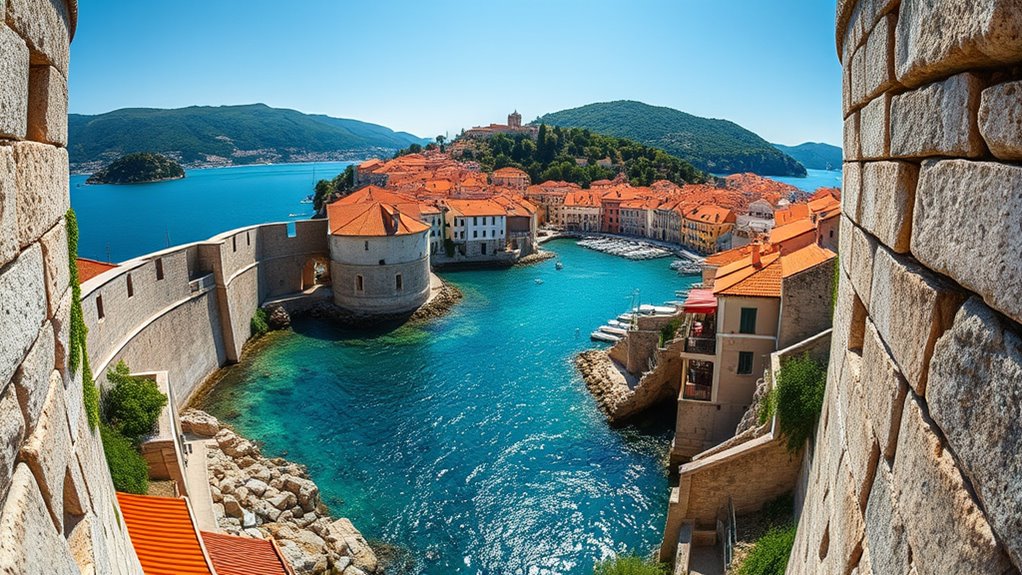
Walking along Dubrovnik’s ancient city walls, you’ll enjoy sweeping views of the Adriatic and the terracotta rooftops below. The seaside scenery from the cable car offers a stunning perspective of the coastline and cityscape. These scenic experiences make Dubrovnik a must-visit spot on your Mediterranean journey. Exploring the surrounding natural areas can also provide unique camping experiences for those interested in outdoor adventures. Engaging in these outdoor activities can enhance your understanding of the region’s securing digital systems, highlighting the importance of cybersecurity even while traveling. Additionally, taking time to learn about alternative investments like gold IRAs can deepen your appreciation for economic stability during your travels.
Walking the City Walls
Strolling along Dubrovnik’s ancient city walls offers an unforgettable perspective on the city’s rich history and stunning seaside scenery. As you walk the 2-kilometer route around the Old Town, you’ll enjoy panoramic views of the Adriatic Sea, terracotta rooftops, and medieval towers. The city walls serve as a historic site that showcases Dubrovnik’s defensive past and architectural beauty. Along the way, you’ll encounter:
- Towers, battlements, and viewing platforms
- Fort Lovrijenac and the maritime harbor
- Scenic vistas of the old cityscape and sea
- Opportunities to photograph the picturesque surroundings
The ascent takes about 1 to 1.5 hours, depending on your pace. Wear proper footwear and sun protection, as the pathways are uneven and exposed to the sun during warmer months.
Seaside Scenic Experiences
From the historic city walls, you can extend your exploration of Dubrovnik by experiencing its stunning seaside vistas. Walk along the approximately 2-kilometer perimeter of the city walls to enjoy panoramic views of the shimmering Adriatic Sea and the Old Town’s terracotta rooftops. For a different perspective, take boat trips along the coast to see Dubrovnik’s medieval walls from the water, offering unforgettable seaside vistas. Visit scenic lookout points, like Mount Srđ via the Dubrovnik Cable Car, for sweeping views of the city and coastline. Coastal exploration continues on nearby Lokrum Island, where lush gardens and secluded beaches await. These scenic seaside experiences combine breathtaking scenery with leisure, making Dubrovnik a perfect destination for seaside vistas and coastal adventures.
Naples, Italy: Exploring Ancient Ruins and Royal Estates
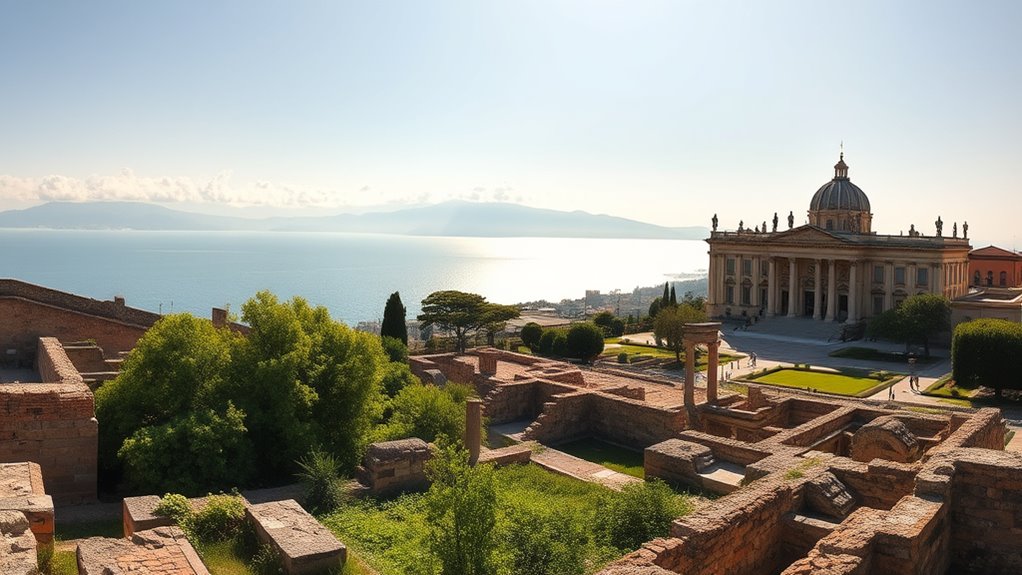
Naples serves as a gateway to Italy’s rich ancient and royal history, offering visitors a wealth of sights to explore. You can visit the renowned Archaeological Museum, home to one of the world’s largest collections of Pompeii artifacts and classical sculptures. Just outside the city, Pompeii awaits, easily reached by the Circumvesuviana train, revealing a remarkably preserved ancient city buried by Mount Vesuvius. For royal grandeur, the Royal Palace of Caserta, a UNESCO World Heritage Site, features stunning gardens, fountains, and statuary that rival France’s Palace of Versailles. While in Naples, don’t miss:
- Castel Nuovo
- Piazza del Plebiscito
- Vibrant street markets
- Historic landmarks
This city offers a fascinating blend of ancient ruins and royal elegance that truly captures Italy’s storied past.
Civitavecchia (Rome), Italy: The Eternal City’s Iconic Landmarks
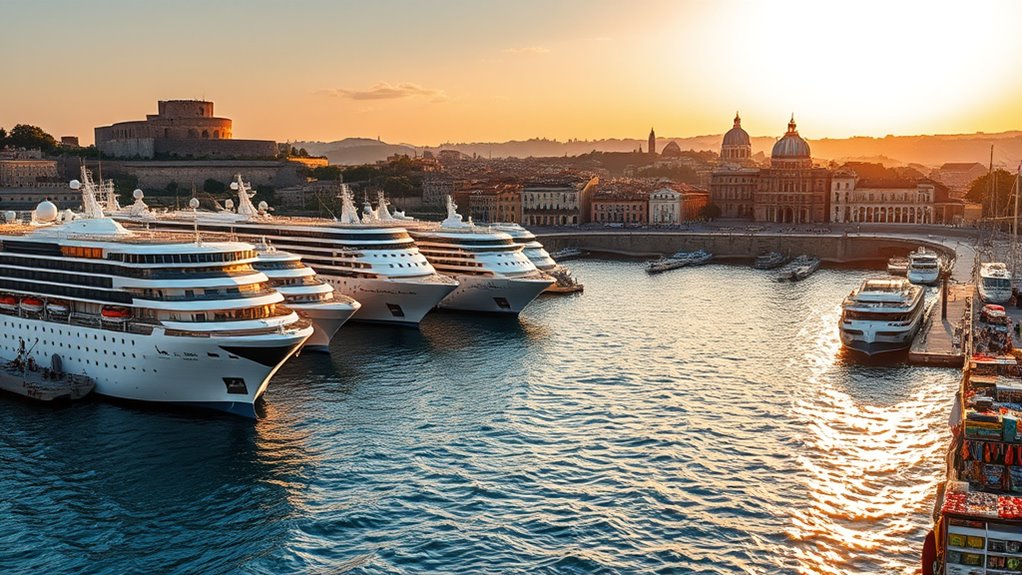
Have you ever wondered how to effortlessly explore Rome’s most iconic landmarks? Civitavecchia, the cruise port serving Rome—the Eternal City—is your gateway to history and culture. Located about 80 kilometers northwest of Rome, it features a well-connected train station that gets you to the city’s top sites in around an hour. A single all-day train ticket costs just 9 euros, covering unlimited travel within Rome, making independent exploration affordable. Once docked, you can walk or take a shuttle to the station, then hop on a train to visit the Roman Forum, Palatine Hill, Pantheon, or St. Peter’s Basilica. Civitavecchia’s modern cruise terminal makes it easy to start your journey into Rome’s rich heritage and timeless landmarks.
Rhodes, Greece: Medieval Charm and Sun-Kissed Beaches
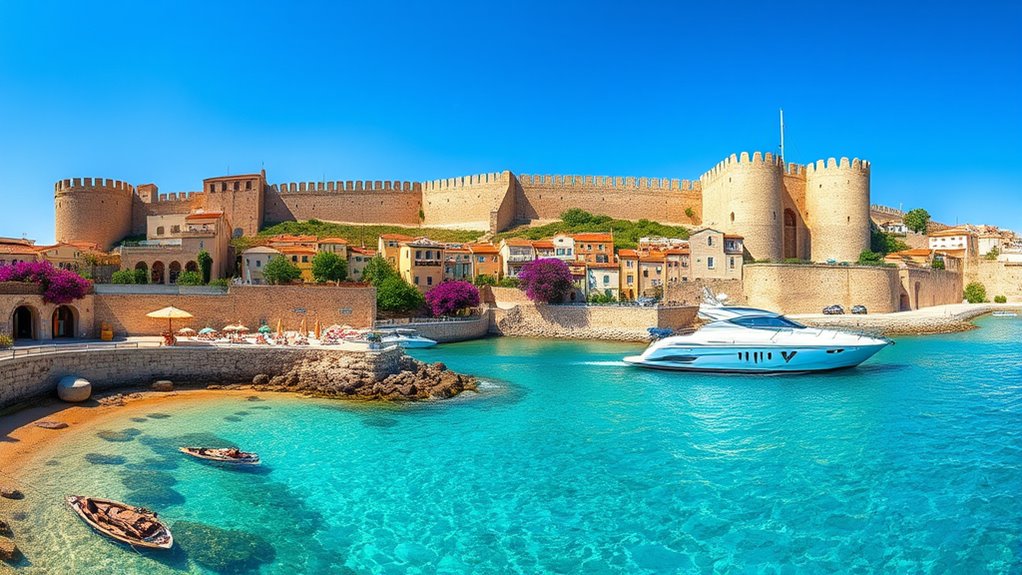
Rhodes, Greece, combines medieval charm with sun-drenched beaches, making it an enchanting destination for travelers seeking history and relaxation. You can explore the well-preserved medieval Old Town, a UNESCO World Heritage site, surrounded by formidable walls and home to the Palace of the Grand Master. Relax on stunning beaches like Lindos Beach and Tsambika Beach, with crystal-clear waters and golden sands. The island’s historic sites, including the Acropolis of Rhodes and ancient ruins at Kamiros, showcase its rich history. Best of all, many attractions are within walking distance, making self-guided exploration easy.
- Wander through the medieval Old Town’s winding streets
- Visit historic sites within close proximity
- Lounge on beautiful beaches with water sports
- Hike scenic trails for panoramic views
Best Time to Visit and Tips for Planning Your Mediterranean Cruise

Planning your Mediterranean cruise involves choosing the right time to visit for ideal weather, fewer crowds, and better deals. The best time to visit is during spring (April to June) and fall (September to October), when the weather is warm and pleasant, perfect for outdoor sightseeing and beach activities. Booking early, especially for summer sailings, guarantees better cabin choices and access to popular embarkation ports. Keep in mind that peak cruise seasons are 9 to 12 months in advance, so early port planning is essential. While winter cruises are less common, they offer fewer crowds and unique seasonal experiences. Traveling during shoulder seasons can also lower prices and enhance your shore excursions, making your Mediterranean adventure more relaxed and enjoyable.
Frequently Asked Questions
What Are the Best Destinations on a Mediterranean Cruise?
You’re curious about the best destinations on a Mediterranean cruise. You should check out Barcelona’s iconic landmarks like La Sagrada Familia, perfect for walking tours. Valletta offers UNESCO sites and ancient temples, while Dubrovnik’s city walls and Old Town views are breathtaking. Rome’s historic sites, such as the Colosseum and Vatican, await your exploration. Don’t miss the Greek islands’ stunning beaches and charming villages for a truly memorable experience.
Which Cruise Line Is Best for the Mediterranean?
Choosing the best Mediterranean cruise line is like finding the perfect key to open a treasure chest. Viking’s destination-focused journeys suit history buffs craving immersive culture. MSC’s lively ships appeal to social travelers wanting diverse ports. Celebrity offers a sophisticated, luxurious experience, ideal for those seeking elegance. Think about your style—whether lively, luxurious, or cultural—and pick the line that turns your Mediterranean dreams into reality.
What Is the Best Month to Cruise the Mediterranean?
You should plan your Mediterranean cruise during spring (April and May) or fall (September and October). These months offer warm weather without the intense heat of summer, making outdoor activities more enjoyable. You’ll also encounter fewer tourists and better prices, creating a more relaxed experience. Spring features blooming landscapes and mild temperatures, while fall provides pleasant warmth perfect for sightseeing, ensuring you get the most out of your trip.
What Is the Busiest Mediterranean Cruise Port?
You’re curious about the cruise corridor’s crowded core, right? Civitavecchia, Italy, takes the crown as the busiest Mediterranean cruise port, welcoming over 4 million passengers annually. Its strategic spot near Rome’s renowned ruins makes it a favorite for travelers seeking history and hassle-free access. The port’s capacity to handle multiple massive ships simultaneously cements its status, making it a bustling hub for cruise lovers and land explorers alike.
Conclusion
Get ready for an unforgettable adventure that’ll blow your mind! These ports are more than just stops—they’re gateways to a world of awe-inspiring art, ancient secrets, and breathtaking scenery. Each one promises experiences so incredible, you’ll feel like you’ve stepped into a dream. Pack your bags, set your sights high, and prepare for a journey so extraordinary, it’ll stay etched in your memory forever. The Mediterranean awaits—are you ready to be amazed?

